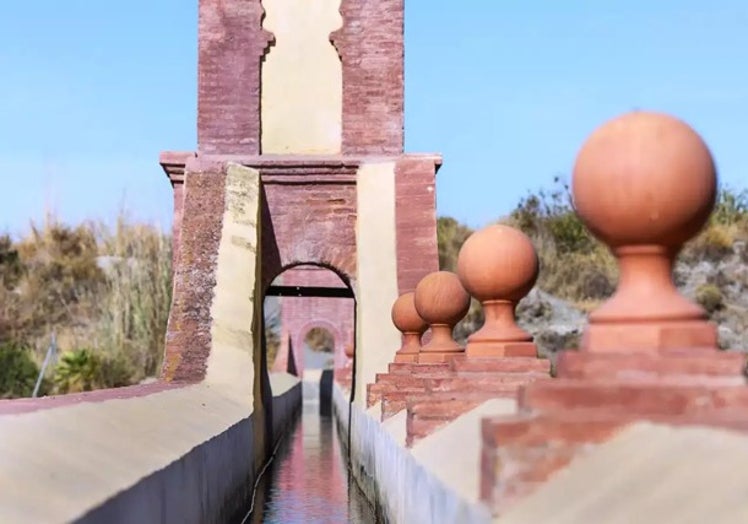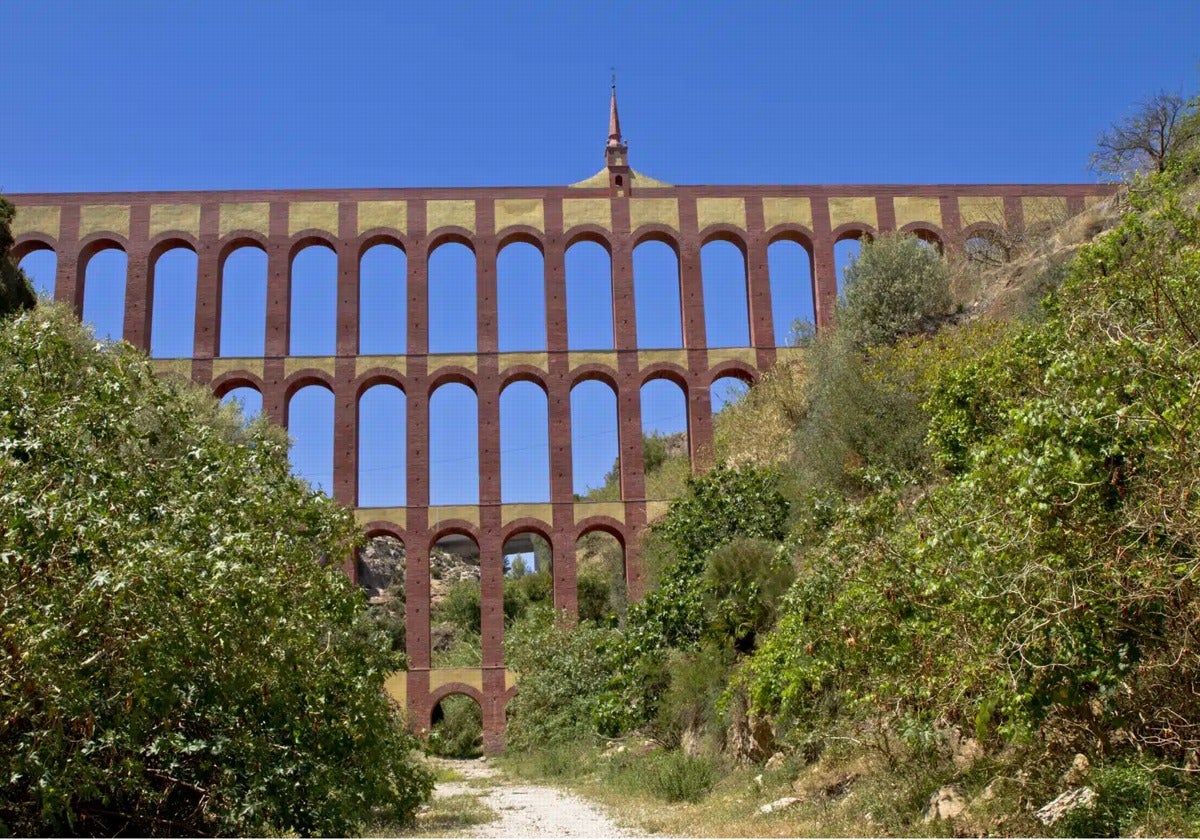The impressive aqueduct on the Costa del Sol that's twice the size of the famous one in Spain's Segovia, and it's still working
Built with four levels and dozens of arches, this vestige of industrial heritage was restored in 2012 and has been declared an Asset of Cultural Interest (BIC)
María Alonso
Malaga
Tuesday, 17 June 2025, 09:35
Between the ravines and orchards of the Axarquía in the east of Malaga province hides a spectacular 19th century aqueduct. Located between Nerja and Maro on the Costa del Sol, this red-brick bridge is a hidden gem that is still in operation. It is the Acueducto del Águila, also known as Puente del Águila. Located just 50 kilometres from Malaga city and 90 from Granada, it is a great option for those who want to discover a place full of history in a unique setting.
History and architecture
Designed by Francisco Cantarero Martín, its structure is notable for its four levels and 36 superimposed brick arches. It is 52 metres high and measures some 100 metres long. The interior of the upper channel measures 65 cm and carries up to 100 litres per second.
Built in 1880, the aqueduct once carried water from Nerja to the Maro sugar factory through two channels, one of which was hidden. Its north face was embellished because it was the one visible from the old road that crossed the ravine towards Almuñécar. But nowadays the N-340 runs along the other side, where parking areas have been set up so people can stop to admire the aqueduct.
Its Mudejar style is characteristic: blind horseshoe arches, terracottas, ornamental friezes and a central gazebo with a weather vane in the shape of a double-headed eagle, hence its name (águila is eagle in Spanish). There is an inscription in the centre: 'Pura y Limpia Concepción' (pure and clean conception), although it is now somewhat worn.
Declared an Asset of Cultural Interest (BIC) by the Junta de Andalucía, it was restored between 2010 and 2012, when damage it suffered during the Civil War was repaired.
Sugar factory
At the end of the 19th century, the San Joaquín sugar factory was built. Founded in 1879 by Joaquín Pérez del Pulgar, its purpose was to clarify and refine sugar cane juice. The facility had warehouses, a distillery and workers' housing, forming a self-sufficient community around a central plaza.

With an area of some 37,000 square metres, it became an example of the industrial revolution on the 'Costa del Azúcar' (coast of sugar), and the Águila aqueduct channelled the water from the Maro spring to the factory and the fields.
However, financial problems meant that the property passed to the Marquis of Tous in 1893, and in 1930 it was acquired by Azucarera Larios, who continued production until the mid-20th century. Today the remains of the main halls, pool, chimney, pond and workers' quarters are still preserved.
How to get there
The aqueduct is located in the Barranco de la Coladilla, near kilometre 294.9 of the N-340. There is a viewpoint at the roadside, a car park next to the road and hiking and cycling routes that allow you to explore it from different angles. To get there by car, you can take exit 295 of the A-7, direction Cuevas de Nerja/Maro.

On foot or by bike: The Águila aqueduct is only about three kilometres from Nerja, so it can easily be reached on foot or by bike. There are also circular hiking routes that start in Nerja and Maro and include viewpoints such as Tajo de los Bueyes and Cala Alberquillas. There are also routes of medium-high difficulty, between 20 and 56 kilometres, which are best done in spring and autumn due to the heat in summer and the instability of the weather in winter.
Bus: You can also get to Nerja by bus and from there you can walk or cycle.
Plans for the area
But, apart from the aqueduct, the area offers much more.
Nerja Caves: (five minutes away): one of the most spectacular prehistoric sites in Spain, with stalactites, cave paintings and a large room for events.
Walk around Maro: charming old town, viewpoints, unspoilt coves such as Maro-Cerro Gordo, and seafood restaurants.
Nature trails: trails through the Sierras Tejeda-Almijara, with Mediterranean flora and breathtaking panoramic views.
Pre-industrial sugar museum in Motril and Ron Montero Winery (tastings): legacy of the area's sugar industry up to the 19th century.
Nearby beaches: in addition to the Maro coves, Nerja offers Burriana, Playazo and the famous Balcón de Europa overlooking the Mediterranean.
Malaga gastronomy: beach bars in Nerja, fried fish dishes, espetos (grilled sardines), Axarquía wines.
Practical advice
As for the timetable, it is a very good idea to go in the early morning or at dusk, with warm light on the brick and fewer people.
In addition, it is advisable to wear comfortable shoes, water, sunscreen and sportswear for long-distance routes.
The viewing platform allows you to take photos without a long walk, but to see the canal and the base, it is best to explore it on foot. There are no bars or other services in the surroundings, but in Nerja and Maro you can find all amenities.
